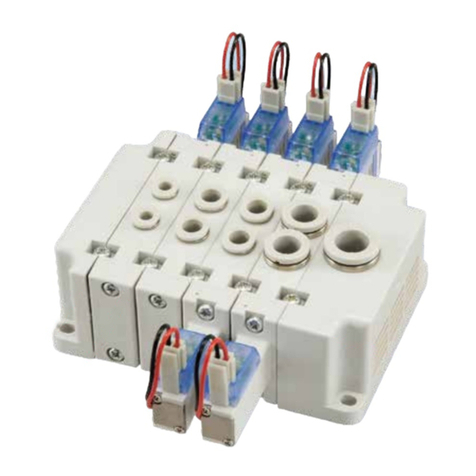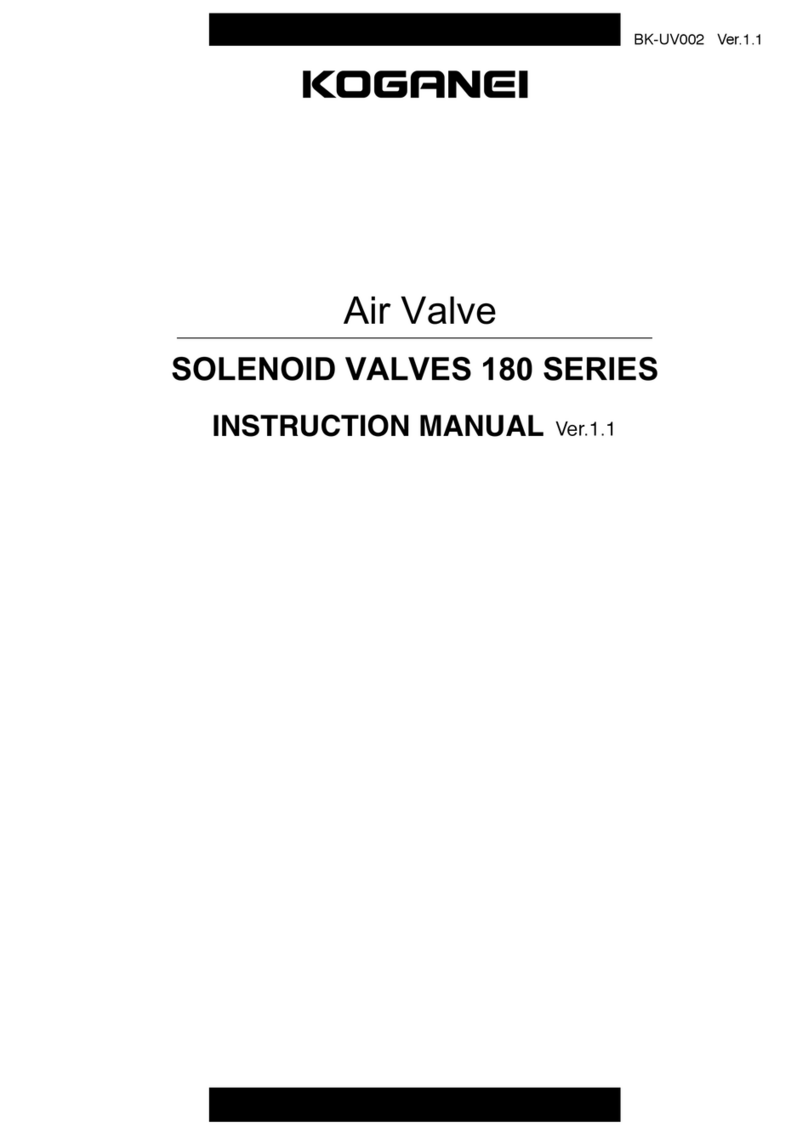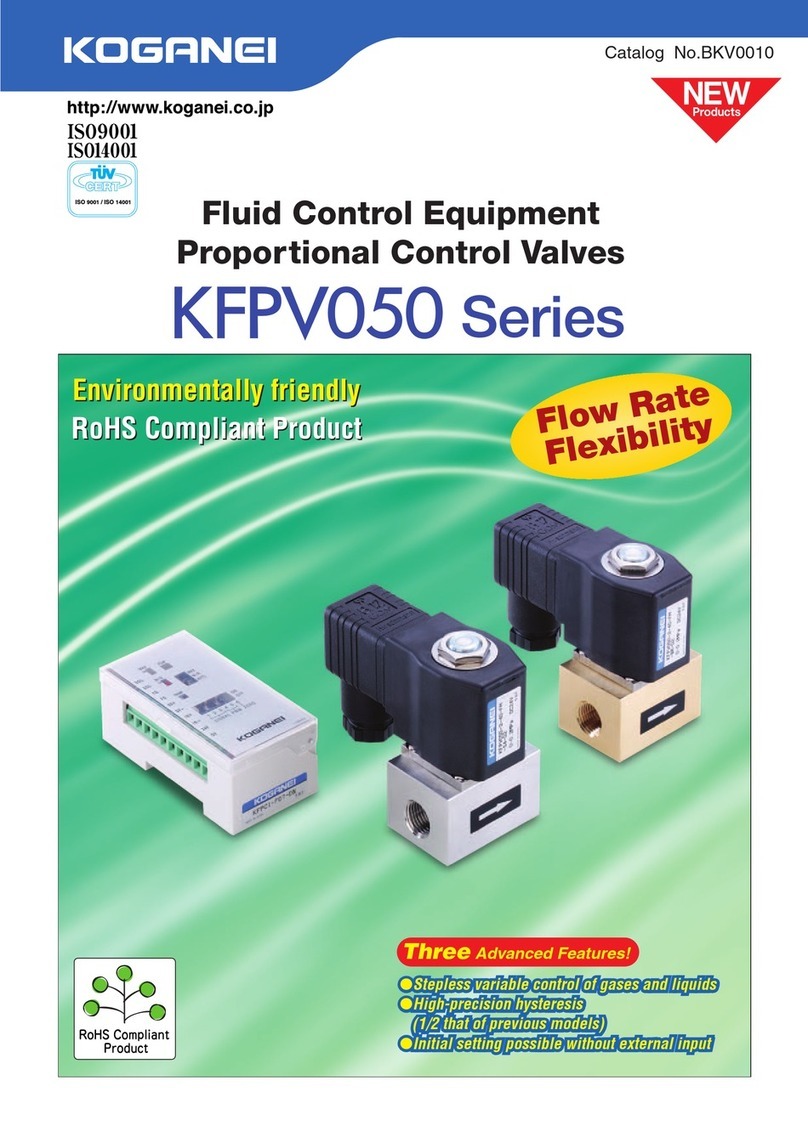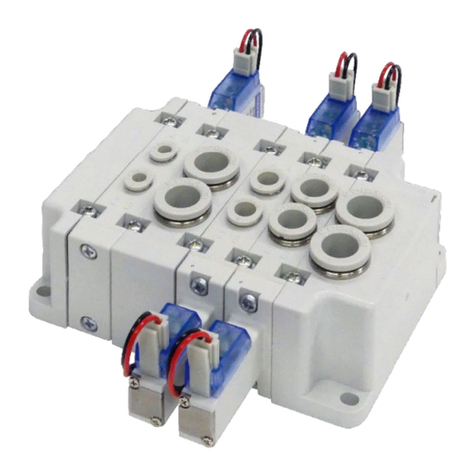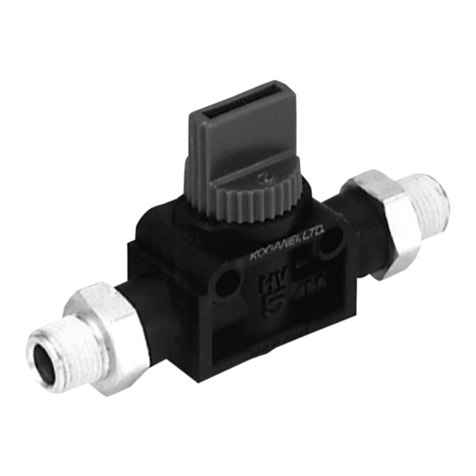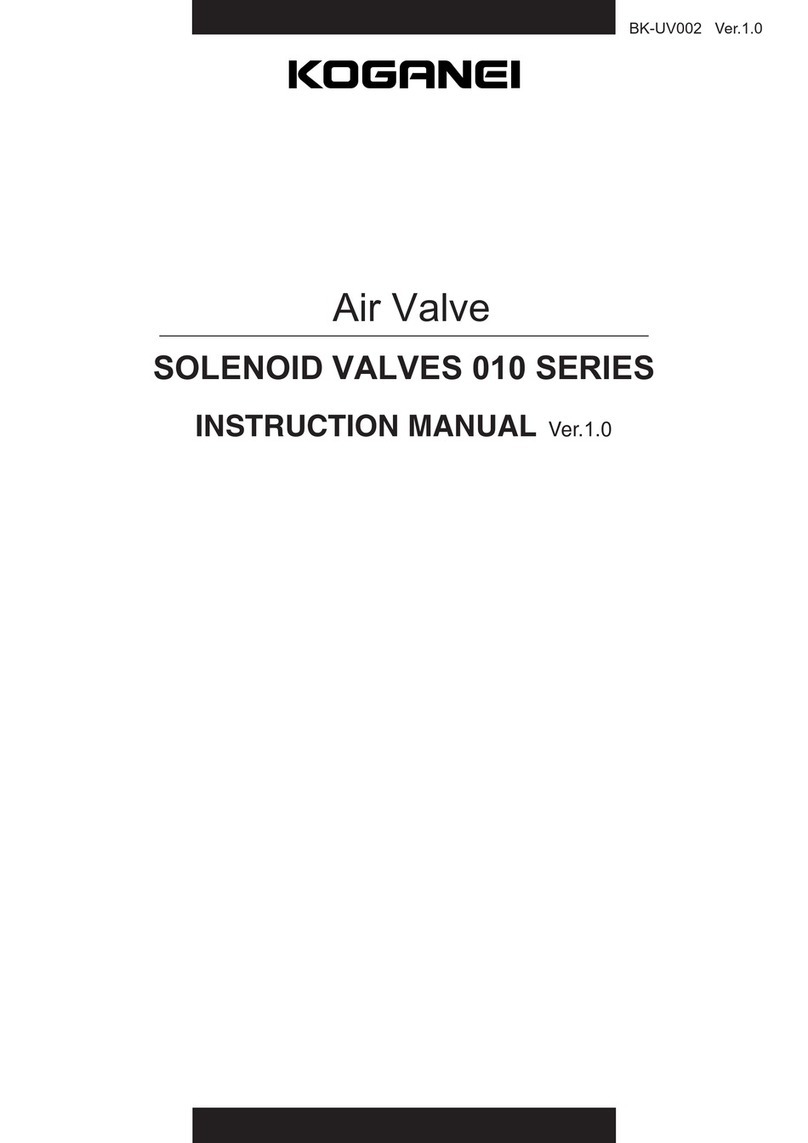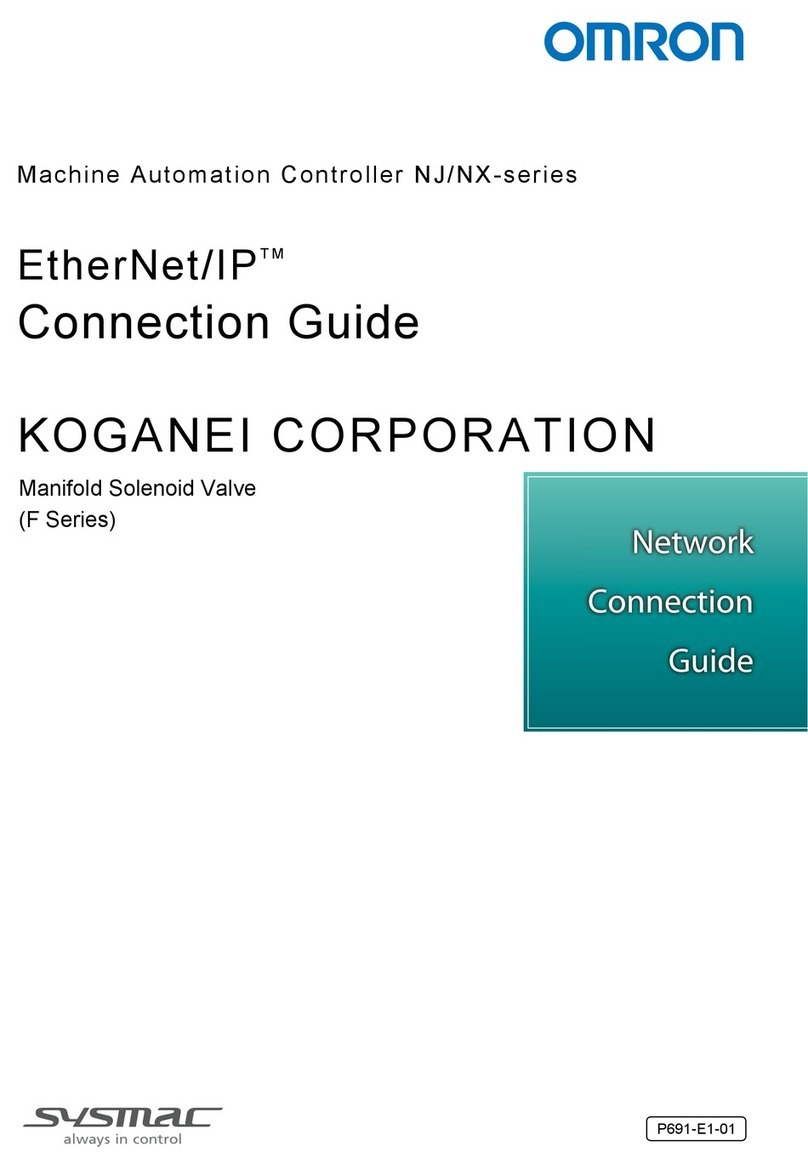
●
Always observe the following items.
1. When using this product in a medium control system, use only
genuine Koganei parts or compatible parts (recommended
parts).
Use only authentic Koganei parts or compatible parts
(recommended parts) to do maintenance or repairs.
Always observe the prescribed methods and procedures.
2. Never inappropriately disassemble or modify the product in
relation to its basic construction, performance, or functions.
Koganei cannot be held responsible for any problems that occur as a
result of these safety precautions not being properly observed.
Other
CAUTION
●
Do not use the product in locations subject to direct sunlight (ultraviolet
radiation); in locations subjected to high temperature or humidity; in
locations where dust, salt, or iron particles are present; or in locations
with media and/or an ambient atmosphere that includes organic
solvents, phosphate ester type hydraulic oil, sulfur dioxide gas, chlorine
gas, acids, etc. It could lead to early shutdown of some functions, a
sudden degradation of performance, and a reduced operating life. For
information about materials, see Major Parts and Materials.
●
When mounting the product, leave room for adequate working space
around it. Failure to do so will make it more difficult to conduct daily
inspections or maintenance, which could eventually lead to system
shutdown or damage to the product.
●
When transporting or mounting a heavy product, firmly support the
product using a lift or support, or use multiple people to ensure
personal safety.
●
Do not bring any magnetic media or memory within one meter of
energized proportional control valves. Doing so creates the risk of
damage to data on the magnetic media due to magnetism.
●
Do not use a proportional control valve in locations subject to large
electric currents or strong magnetic fields. It could result in erratic
operation.
●
Oil from the compressor (with the exception of oil-free compressors)
may dramatically decrease the product's capabilities or cause the
functions to stop. Be sure to remove oil from the air by installing a
mist filter preceding the pneumatic equipment.
●
When the media is liquid, provide a relief valve on the circuit to
prevent a liquid seal around the circuit. Failure to do so can result in
the valve not being able to open.
ATTENTION
●
Whenever considering use of this product in situations or
environments not specifically noted in the catalog or in manuals, or
in applications where safety is an important requirement such as in
aircraft facilities, combustion equipment, leisure equipment, safety
equipment, and other places where human life or assets may be
greatly affected, take adequate safety precautions such as allowing
plenty of margin for ratings and performance, or fail-safe measures.
Contact the sales department at Koganei regarding use in such
applications.
●
Always check the catalog and other reference materials for product
wiring and piping.
●
When handling the product, wear protective gloves, safety glasses,
protective mask, safety shoes, and other protective clothing
whenever necessary.
●
When the product can no longer be used or is no longer necessary,
dispose of it appropriately as industrial waste.
●
A proportional control valve can exhibit degraded performance and
function over its operating life. Always conduct daily inspections and
confirm that all requisite system functions are satisfied to prevent
accidents from happening.
●
Proportional control valves are not completely leak-free. Designs
should take into considering the capacity and retention time required
for pressure retention within the pressure vessel, etc.
●
For inquiries about the product, consult your nearest Koganei sales
office or the Koganei Overseas Department. The addresses and
telephone numbers are shown on the back cover of this catalog.
●Do not use proportional control valves or the wiring that
controls them in locations subject to surges or near strong
magnetic fields or power lines through which large electric
currents flow. It could result in unintended operation.
●When a proportional control valve is turned off, it may
generate a surge voltage or an electromagnetic wave that
affects the operation of surrounding equipment. Use surge-
protected solenoids and use countermeasures for
electromagnetic waves and surges to electric circuits.
●Do not use the product near the ocean, in direct sunlight,
near mercury vapor lamps, or near equipment that generates
ozone. Deterioration of rubber parts caused by ozone may
reduce performance and functions or stop functions.
●Do not allow the product to be thrown into fire. Doing so
creates the risk of the product exploding or the release of
toxic gases.
●Do not sit on the product, place your foot on it, or place other
objects on it.
Doing so creates the risk of injury due to tripping or the
product tipping over or falling, resulting in product damage
and abnormal, erratic, or runaway operation.
●Leave all maintenance, inspection, repair, piping (attachment,
detachment, replacement) or similar work up to personnel
who have sufficient knowledge and experience in the
applicable products, media, media control systems, etc.
When performing work, be sure to totally turn off media
supply and also note the points below.
1. In the case of gas, make sure to confirm that pressure
inside the product and piping connected to the product is
zero. In particular, be aware that residual air will still be in
the air compressor or air storage tank. The actuator may
move abruptly if residual air pressure remains inside the
piping, causing injury.
2. In the case of liquid, remove all liquid from inside the
product and piping. Corrosive media, in particular, creates
the risk of chemical burns and contamination of the
surrounding area.
3.In the case of high-temperature media, observe the
precautions above and also make sure that the valve has
cooled sufficiently. Unintentional contact creates the risk of
burn injuries.
●When using an antifrost heater or heat insulation material to
keep the product warm, use it on the main part of the product
and not on the solenoid. Coil burnout creates the risk of
electric shock, fire, and abnormal operation.
●Use of this product under the conditions described below
comes under the jurisdiction of Japan's High Pressure Gas
Safety Act. Note that violations by individuals or corporations
are punishable by law.
Use of compressed gas with a gauge pressure of 1 MPa [145
psi] or greater under normal temperature or use of gas with a
pressure of 1 MPa [145 psi] under conditions converted to a
temperature of 35 ℃[95 ℉] (acetylene gas and liquefied gas
are subjected to even stricter standards).
For details, refer to the High Pressure Gas Safety Act.
●When installing a proportional control valve in the control anel
or when the energizing time is long, use countermeasures for
heat dissipation so that the ambient temperature of the
proportional control valve is always within the specified
temperature range. In particular, note that continual charging
of a proportional control valve that is fully open can cause an
increase in resistance due to a rise in solenoid temperature,
and loss of function of the temperature compensation circuit,
which stabilizes the flow rate.
●Long-term continuous charging can make the coil hot.
Unintentional contact creates the risk of burn injuries.
●After completing wiring work, check to make sure that all
connections are correct before turning on the power.
●Design devices so fluid control equipment is not operated by
an emergency stop, power outage, or other system
abnormality, and so there is no chance of damage or
personal injury even upon return to the non-energized state.
❹
